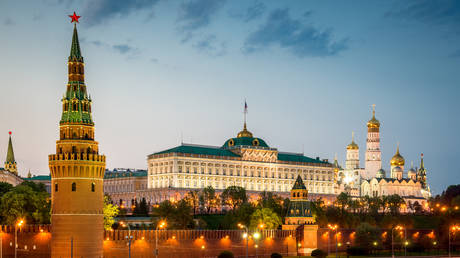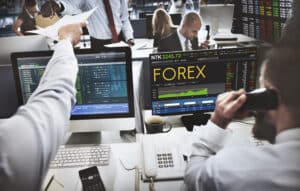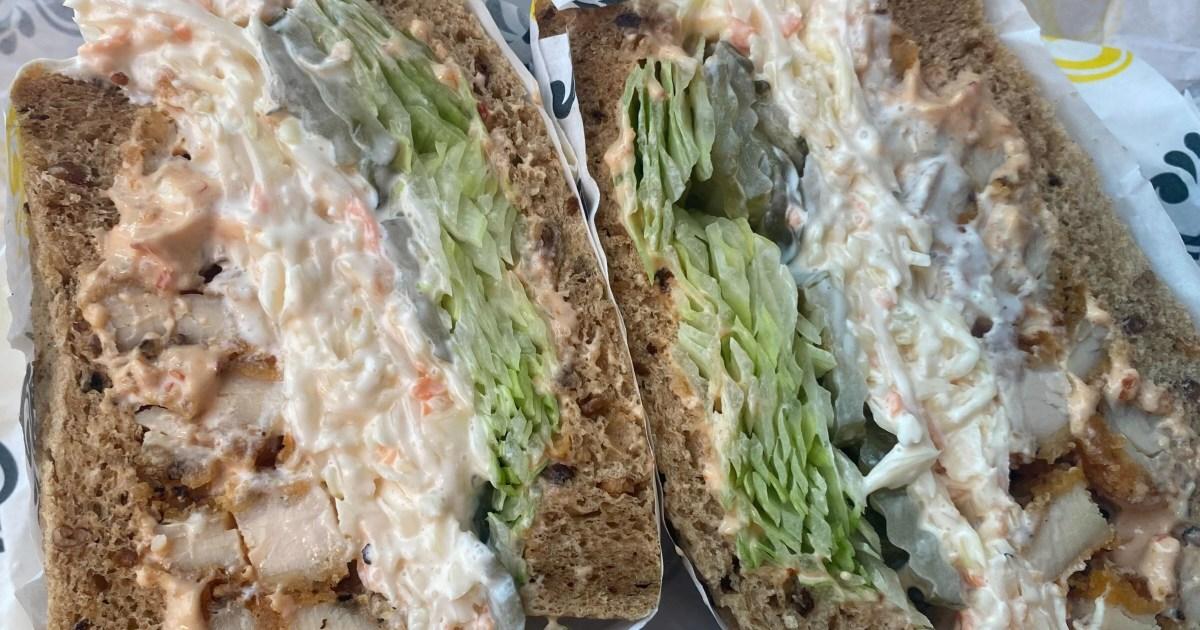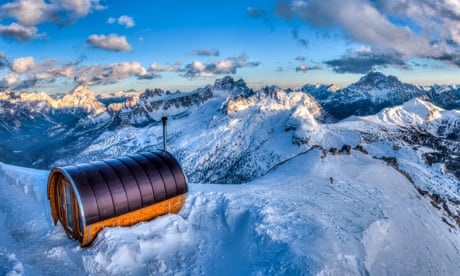The Rhine overflowed last winter, covering fields miles from the river and in some places leaving just the tops of trees visible.
But Thomas Bollig, who farms just a few miles from the banks of the Rhine, was not worried. Even as floods inundated the fields of his neighbours, making sowing impossible, his holdings were largely unaffected. Bollig farms organically, and the natural methods he uses to improve his soil allow his fields to hold more water when it rains, and release it gradually, coping well with floods and droughts.

“It’s like a sponge,” he says, pointing across largely flat fields by Wachtberg village, near the city of Bonn. “We didn’t have the problems that many farmers did.”
That is not the only advantage he sees in having switched his arable and livestock farm from conventional intensive farming to fully organic farming. Around him, in the summer sunlight, bees are buzzing and the air is full of insects, alighting on the flowers that speckle his crops of beans and grain, the song of birds a cheerful background.
“We have a farm full of life today,” he says. “Wildflowers, insects, pollinators – it’s a perfect symbiosis, as they feed on the pests on the crops. And the soil is full of worms.” Out of 75 hectares (185 acres) on his farm, about eight hectares are wildflower meadows. In the middle of some of his cropping fields, tangled areas are left untouched for flowers and animals, a riot of colour – red, blue and gold – amid the green.

A recent pest infestation in his beanfield illustrates the point. “It was so bad, that we considered spraying,” Bollig says. But he kept faith in the organic process, and two weeks later the pests were gone and the fields “full of ladybirds”.
But the wildlife that abounds on Bollig’s farm is no longer typical for western European farms. About a quarter of Europe’s bird population has been wiped out in the last four decades – that is half a billion fewer birds in the sky today compared with 1980. Four in 10 European tree species are classed as threatened, butterfly numbers are down by about a third, one in 10 bee species are dying out, and two-thirds of the habitats of ecological importance are in an unfavourable condition. A fifth of European species face extinction.
Everywhere you look, the richness and abundance of European nature is under threat. Since the 1970s and 80s, even while many environmental indicators in Europe have improved – cleaner air in cities, less industrial pollution, less sewage in waterways (outside the UK) – the story of nature is one of steep and stark decline. Wildlife, trees, plants, fish and insects – the picture is bleak.
It is not possible to lay all of this destruction at the door of intensive farming, as urbanisation, invasive species and pollution from industry have their own impacts, but the figures clearly suggest farming has played a big role. Amid the overall decline in bird numbers, the ones making their home in farmland had it by far the worst, with numbers down by 57%, and separate research suggests steeper declines of insects in farmed areas.
Brian MacSharry, the head of the nature and biodiversity group at the European Environment Agency, says: “The habitat situation is pretty bad, the species little better, and there is a time lag between [the destruction of habitats and decline in] species. Overall, we know it is bad and that the trend is deteriorating. Agriculture is by far the biggest pressure.”
It was not supposed to be this way. Since the early 2000s, changes to Europe’s farming practices and subsidy regime – the common agricultural policy (CAP) – have been geared explicitly towards protecting the environment, as well as supporting farmers and food production. The CAP represents a third of the EU budget, coming to about €55bn (£46bn) a year and in return for that largesse, farmers are supposed to meet a minimum level of environmental protection. Taking additional measures such as growing more trees or conserving wetlands can net them extra support.

But so far at least, the environmental aspects of the CAP changes have not worked. The European court of auditors in 2020 found little evidence of a positive impact on biodiversity from the CAP. The European Environment Agency, in its State of Nature report in 2023, found that the EU’s farmed environment had continued to decline, with the health of only 14% of habitats and about a quarter of non-bird species classed as “good”. The CAP is also making the climate worse: about 80% of the budget goes to support carbon-intensive animal food products, according to a paper published this month in Nature.
“The CAP has become a monster,” says Faustine Bas-Defossez, the director of nature, health and environment at the European Environmental Bureau, a network of citizens’ organisations. “It is not helping farmers in the mainstream to adopt more sustainable practices. It’s driving the intensification of farming, and increasing the pressure on natural resources. Instead of the polluter pays principle, it’s turning into a system of the polluter gets paid.”
Pieter de Pous, the programme lead at the E3G thinktank, says the CAP is “a policy in search of a justification”. “It is an emotionally charged topic that touches on identity, nationhood, culture. It is about concerns over depopulation in many areas of Europe, and the strong policy wish to not have depopulation.”
After pressure from protesting farmers, even the meagre protections for nature will be further watered down. De Pous says farmers capitalised onthe European Commission’s fear of a backlash against green policies and green parties in the parliamentary elections this June. “This is political opportunism, it’s tactical on the part of the farmers who are protesting.” He believes the farmers were simply going after a larger slice of the European budget.
Whatever the causes, the results for nature are likely to be dire. And ironically, given the fervour of the protests, any hoped-for boon to small farmers is unlikely to materialise – it will be big farmers who benefit from less stringent regulation, as they do from the CAP overall. As payments to farmers under the CAP are based on the amount of land they farm, the CAP favours size above everything else. That means the squeeze on traditional small-scale family farms will continue, with the biggest farmers continuing to scoop up the lion’s share of the cash, and the poorest forced further to the margins.
How did we get into this mess? And is there a way out?
A focus on food security above all
In the early years of what became the EU, the focus of European agricultural policy was on food security above all. When the CAP was conceived, in the early 1960s, farmers were encouraged to increase yields by adopting more efficient machinery and the new fertilisers and pesticides. They were given quotas to supply certain amounts of food, and guaranteed prices for their produce. These were seen as ways to provide stability to farmers, and food security to consumers.
In the late 1980s, when it became clear the quotas were distorting the market and leading to surpluses of some products – the EU’s famous “butter mountain” and “wine lake” – overhaul of the CAP led to more direct payments to farmers. Then, from 2003 to 2012, farm payments were “decoupled” entirely from production and based instead on the amount of land farmed, with extra payments available for farmers who could exhibit good stewardship of the environment. While that has simplified the payment system and removed many of the distortions, it also means the biggest farmers reap the biggest rewards.
“CAP is just welfare for the rich,” is how Ariel Brunner, the director of BirdLife Europe, termed it, on the social media platform X. “With symbolic consolation for smaller farmers to muddy the water. It doesn’t serve any social purpose. And it favours the destruction of the resources farming depends on.”
But it is also still a lifeline for poor farmers. The problem is that the supermarkets that buy the farmers’ produce, and the suppliers of farm inputs such as fertiliser and pesticides, also count on the subsidy payments. “You have the retailers and middlemen sucking out all of the margin, and farmers being left with very little,” says Will White, the sustainable farming coordinator at the UK-based Sustain coalition of farming and food organisations. “That’s one of the things that locks us into a cycle of highly intensive farming. The status quo is not a good option for anyone.”
In the UK, for instance, farmers make less than a penny in profit from selling a loaf of bread or an average-sized block of cheese. (Although the UK is no longer under the CAP, the government still provides equivalent subsidies under a separate support scheme, so the mechanism is broadly similar.) On each kilo of apples, the farmer makes just 3p. Martin Lines, the chief executive of the Nature Friendly Farming Network, says “none of the payment really reaches the farmer. The payments go to the value chain. Their profits have mushroomed.”
So a system that was meant to help farmers, keep Europeans fed and the land well cared for, has turned into one that trashes the environment; enriches big landowners and leaves poor farmers struggling; delights retailers but costs money for consumers; and causes headaches for politicians of all stripes because they know they can be held to ransom by cavalcades of tractors and burning haybales.
In Britain, the post-Brexit farming system is tied up in similar muddles. The Conservative government vowed in 2017 to move away from area-based payments to “public money for public goods”, but that has proved easier in principle than practice, as environmental land management schemes have come under fire, with accusations of landowners forcing struggling tenants off their land so they can rewild it or grow trees for carbon offsets, and a renewed feeling that small farmers are still at the bottom of the heap.
Meanwhile, the climate crisis is gathering pace, and the effects are being felt on food and farming, sometimes quite brutally. Agriculture and land use change contribute at least a fifth of global greenhouse gas emissions, so the effects of farming on the climate need to be tackled at the same time as the effects of the climate on farming, but so far there is little sign of that happening.
To bring farmers round to the benefits of farming in a more environmentally sustainable manner, they need to be shown that green regulations ultimately benefit them, says Sustain’s White. “Farmers care about the bottom line – if they can make money from environmental schemes, I think most farmers will listen. Farmers should be working together with governments more – it’s not in their interests to be at the political extremes.”
There are encouraging signs of possible reform. In September, farmers, retailers, consumer groups and environmentalists held strategic dialogues, at the suggestion of the European Commission president, Ursula von der Leyen, and put together a proposal that calls for “urgent, ambitious and feasible” change in farm and food systems, with financial support to help farmers get there. It also acknowledges that Europeans eat more animal protein than doctors and scientists recommend, and calls for a shift toward plant-based diets supported by better education, stricter marketing and voluntary buyouts of farms in regions that intensively rear livestock.

There is plenty of scope for redirecting payments to farmers so that they reward greener and less intensive farming, argues Richard Benwell, the chief executive of the Wildlife and Countryside Link charity. “The environmental work that farmers do has been chronically undervalued for a very long time,” he says. “We need to recognise those public goods that traditional small farmers have long been expected to do for free. And on the other side, where harm occurs they should have to pay.”
Bollig believes the CAP could be better targeted, to benefit farmers who follow organic or less demanding “nature-friendly” practices. There are some schemes within the CAP to encourage sustainable farming, but they do not go far enough to help reduce inputs instead of seeking higher yields, he says.
“It doesn’t give farmers a motivation to change,” says Bollig. “Bad farms with better yields make more money, and good farms [with sustainable practices] are left to struggle.”
Building a sustainable global food system, in Europe and across the world, in which greenhouse gas emissions are low, in which biodiversity flourishes, in which the impacts of extreme weather are minimised using natural means, is difficult but possible, according to Ed Davey, of the World Resources Institute. “Farming can work in harmony with nature,” he says. “Sustainable farming techniques are there.”
Crucial to any successful reform will be separating out the interests of big farms and small ones, says De Pous. While big farmers benefit from intensification, with more fertiliser, more pesticide, more concentrated animal feed lots, small farmers could benefit from the opposite, with more emphasis on quality and organic production. “Small farmers should not give up, but they need to question who is representing them, and what they are asking for. The interests of small farmers are not necessarily the interests of big farmers. There are huge differences,” he said.
Consumers will also have to adjust. In the EU, about 80% of farm subsidy goes towards animal products, which means it has an outsize impact on greenhouse gas emissions. In some European countries, livestock now outnumber people. Changing this will be painful – the farmers of the Netherlands objected to proposals to start to limit the national herd, to cut down on pollution, and at recent polls it was one of the issues that pushed the far right to electoral success in the country. Yet if consumers in developed countries change their diet to eat more healthily – which means less ultra-processed food and less meat – there will be less demand for intensively farmed meat products, and the burden on the land will reduce markedly.
Hopes of reaching the point where farm subsidy systems around the world are dismantled or redirected towards providing the kind of planet we need to feed 8 billion people – or in future 10 billion, or even 12 billion – without destroying what remains of the wildlife, and permanently disabling the climate, may seem utopian. But there is no law of nature that says farming must kill off the natural environment it depends on; many small-scale farmers around the world, and for previous centuries, have worked in harmony with nature and other species. Farm subsidy regimes are economic systems that were drawn up by bureaucrats within the last half-century, and they can be redrawn, despite short-term pressure to the contrary. What that takes is political courage.










